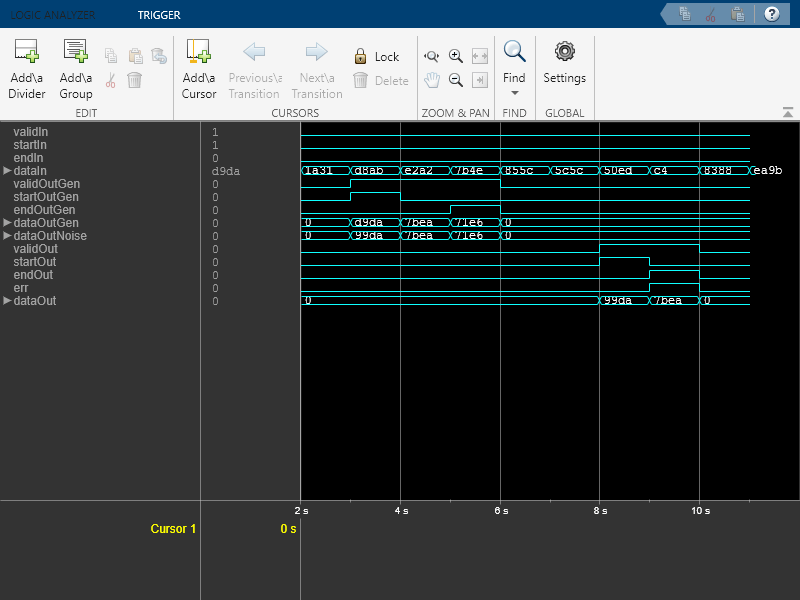comm.HDLCRCGenerator
Generate CRC code bits and append to input data
Description
This HDL-optimized cyclic redundancy code (CRC) generator System object™ generates cyclic redundancy code (CRC) bits. Instead of frame processing, the
HDLCRCGenerator
System object processes streaming data. The object has frame synchronization control signals
for both input and output data streams.
To generate cyclic redundancy code bits:
Create the
comm.HDLCRCGeneratorobject and set its properties.Call the object with arguments, as if it were a function.
To learn more about how System objects work, see What Are System Objects?
Creation
Syntax
Description
CRCGen = comm.HDLCRCGeneratorCRCGen. This object generates CRC bits according to a
specified generator polynomial and appends them to the input data.
CRCGen = comm.HDLCRCGenerator(Name,Value)
CRCGen = comm.HDLCRCGenerator('Polynomial',[1 0 0 0 1 0 0 0 0], ...
'FinalXORValue',[1 1 0 0 0 0 0 0]);CRCGen = comm.HDLCRCGenerator(poly,Name,Value)Polynomial property to
poly, and the other specified property names to the specified
values.
Properties
Usage
Description
Input Arguments
Output Arguments
Object Functions
To use an object function, specify the
System object as the first input argument. For
example, to release system resources of a System object named obj, use
this syntax:
release(obj)
Examples
Algorithms
Extended Capabilities
Version History
Introduced in R2012a

